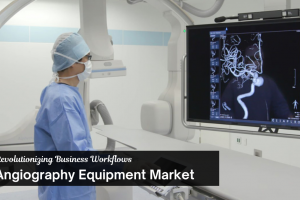The latest market report published by Credence Research, Inc. “Global Artificial Pancreas Device Systems Market: Growth, Future Prospects, and Competitive Analysis, 2016 – 2028”. The global artificial pancreas device systems market is anticipated to grow at a substantial CAGR of 19.50% in the upcoming years. The global artificial pancreas device systems industry was estimated to be worth USD 0.3 billion in 2022 and was expected to be worth USD 1.04 billion by 2030.
Artificial pancreas device systems market refers to the industry involved in the development, production, and distribution of medical devices designed to mimic the function of the pancreas in managing blood glucose levels for individuals with diabetes. Artificial pancreas device systems, also known as closed-loop systems, combine continuous glucose monitoring (CGM) with insulin delivery systems to provide automated glucose control.
North American region was anticipated to hold a prominent share of the global artificial pancreas device systems market. The region is anticipated to be driven by rising rates of obesity, effective reimbursement systems, and increased knowledge of cutting-edge solutions for managing diabetes. The existence of significant players, high treatment costs, technical advancements, and product releases are additional factors anticipated to boost the regional market. Additionally, the growing number of diabetics worldwide has prompted both public and commercial organizations to invest in research into diabetes management.
The global Artificial Pancreas Device Systems Market is bifurcated into Device Type and Geography. Based on Product the market is categorized into Threshold Suspend Device Systems, Control-to-Range (CTR) Systems & Control-to-Target (CTT) Systems. Based on geography, the market is categorized as North America, Europe, Asia Pacific, Latin America, and the Middle East and Africa.
Artificial Pancreas Device Systems Market Major Challenges are multifaceted and complex. One of the biggest challenges is the regulatory approval process which can be lengthy, expensive and require extensive clinical trials to prove safety and efficacy. Additionally, there is a lack of standardization in terms of definitions, metrics, and protocols for evaluating artificial pancreas systems. Furthermore, reimbursement policies and payment models need to be established for these devices as they are still considered new technology by many health insurance companies. Another challenge is related to patient education since patients may not fully understand how these devices work or how to use them properly without adequate training from healthcare professionals.
The global Artificial Pancreas Device Systems (APDS) market growth is influenced by several factors:
- Rising Prevalence of Diabetes: There is a significant increase in the number of people suffering from diabetes globally, particularly Type 1 diabetes. This increasing prevalence is driving the demand for advanced treatment solutions such as APDS.
- Technological Advancements: Significant technological advancements in diabetes management devices, such as the development of closed-loop systems and the incorporation of AI and machine learning for predictive algorithms, are boosting the market growth.
- Increased R&D Investments: Increased investment in research and development by major medical device manufacturers for the development of more advanced and efficient artificial pancreas device systems also contributes to the market growth.
- Favorable Reimbursement Policies: In developed countries, favorable insurance and reimbursement policies for diabetic care devices like APDS support market growth by making these devices more accessible to patients.
- Growing Awareness and Education: As awareness about the benefits of APDS grows among patients and healthcare professionals, demand for these systems is likely to increase. Furthermore, several organizations are working on educating people about diabetes management, which can also boost the market growth.
- Government Initiatives: Government initiatives to curb the rising prevalence of diabetes and to provide advanced healthcare infrastructure are also significant contributors to market growth.
Why to Buy This Report-
- The report provides a qualitative as well as quantitative analysis of the global Artificial Pancreas Device Systems Market by segments, current trends, drivers, restraints, opportunities, challenges, and market dynamics with the historical period from 2016-2020, the base year- 2021, and the projection period 2022-2028.
- The report includes information on the competitive landscape, such as how the market’s top competitors operate at the global, regional, and country levels.
- In-depth analysis of the global market segmentation on the basis of Device Type
- Major nations in each region with their import/export statistics
- The global Artificial Pancreas Device Systems Market report also includes the analysis of the market at a global, regional, and country-level along with key market trends, major players analysis, market growth strategies, and key application areas.
Browse Full Report: https://www.credenceresearch.com/report/artificial-pancreas-device-systems-market
Visit: https://www.credenceresearch.com/
Related Report: https://www.credenceresearch.com/report/chiral-chromatography-columns-market
Related Report: https://www.credenceresearch.com/report/karl-fischer-titrators-market
Browse Our Blog: https://www.linkedin.com/pulse/artificial-pancreas-device-systems-market-rising-trends-singh







